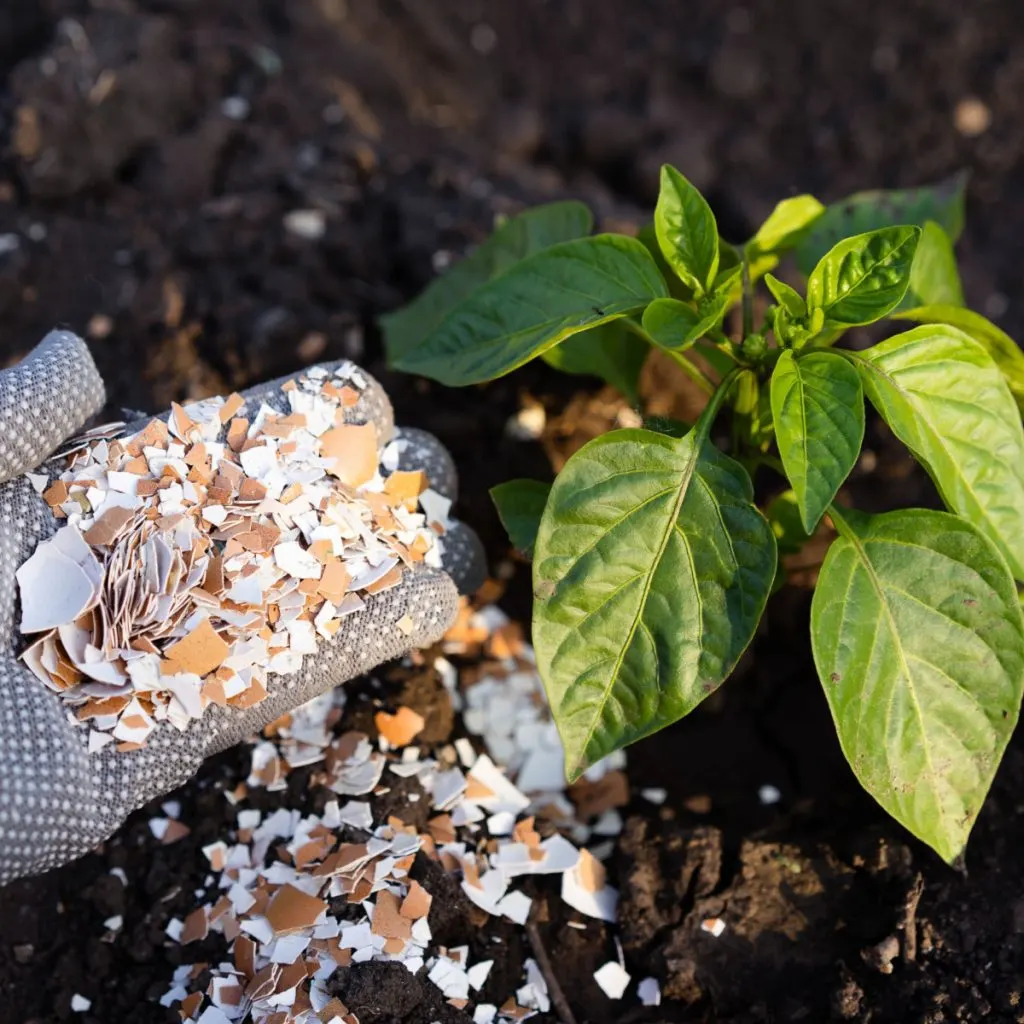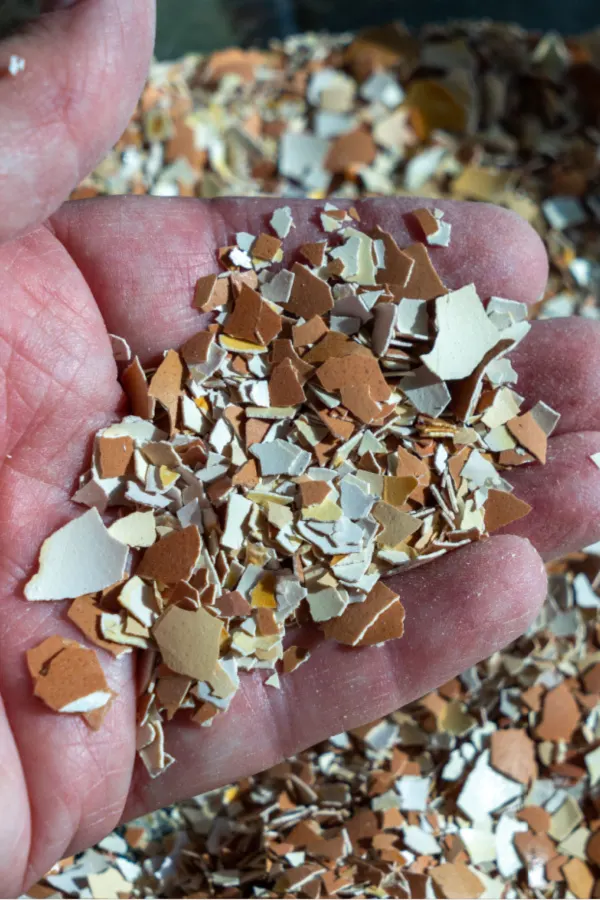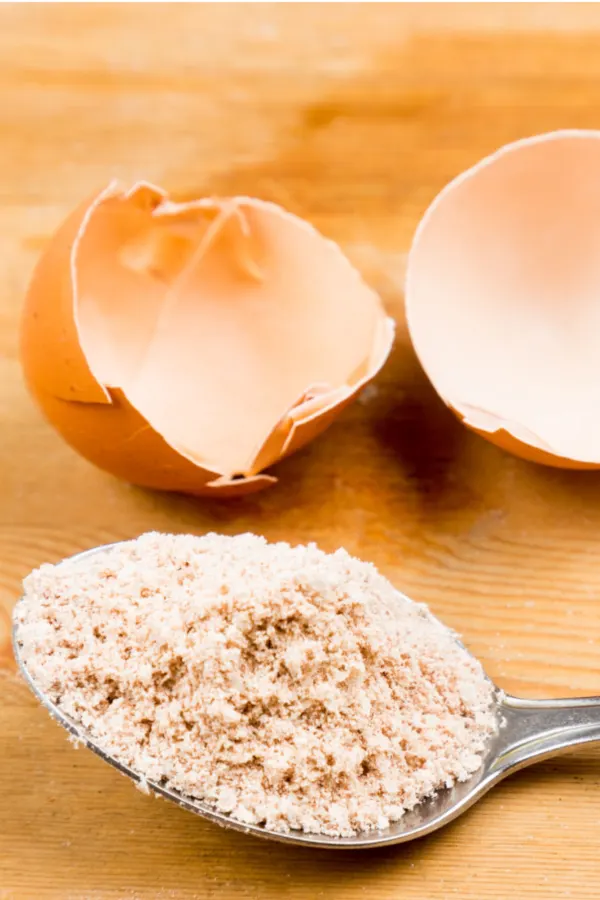Are you using egg shells correctly in your garden and flowerbeds?
Egg shells are one of the most commonly recommended organic ingredients for powering up garden soil and plants. And for good reason! Egg shells are rich in calcium, which happens to be a critical nutrient for strong plant cell walls. Calcium is also vital for overall plant health.
Calcium also plays a critical role in the formation of fruit. In fact, when there is a lack of available calcium, common garden ailments like blossom end rot on tomatoes and peppers can be a big issue.

For all of the reasons above, egg shells, which are made up of over 90% calcium carbonate, can certainly help provide calcium to your plants and the soil they grow in. But here’s the issue – most gardeners don’t use them in a way that maximizes their benefits.
Simply tossing crushed egg shells into planting holes, or scattering them on the soil’s surface may seem helpful, but the reality is that this method does little to help your current plants.
Using Egg Shells Correctly In Gardens & Flowerbeds
The real secret to making the most of egg shells in your garden is all in how you prepare them. And as you will see below, simply taking an extra step with your egg shells prior to putting them in your garden can make a huge difference in your plants. And right away!
Egg shells are composed primarily of calcium carbonate. When properly used, they provide a wonderful slow-release source of calcium. Adding calcium improves soil structure, making it more conducive to root growth.
Egg shells can also correct calcium deficiencies like mentioned above, which can cause weak stems, curled leaves, and poor fruit. And it’s not important for just tomatoes and peppers, but it’s also beneficial for leafy greens, root vegetables, and flowering plants.

The Big Mistake: Using Egg Shells In Pieces
Many gardeners assume that tossing large chunks, or even semi-crushed pieces of egg shells into planting holes or scattering them around plants will quickly enrich the soil. Unfortunately, this method is highly ineffective, and for a few key reasons.
First and foremost, egg shells take a long time to break down in the soil, especially when left in pieces. It can take months or even years for the calcium to become available to plants.
This means that simply placing egg shells in planting holes won’t provide any immediate benefits to the plants growing in that spot during the current season. When egg shells are left in chunks, they still have a fair amount of surface area, and it takes time for it all to break down.
That delay is critical. Why? Because it prevents soil microbes from effectively breaking them down and releasing their nutrients. It’s the same reason you always want to break down additions to your compost pile as small as possible. The smaller the ingredients, the faster the decomposition.
Listen In Below To Our Podcast On Using Egg Shells & Coffee Grounds In Your Garden!
The Best Way For Using Egg shells Correctly In The Garden – Grind Them Into A Powder!
Since it takes so long for the calcium in small pieces of egg shells to become available for intake, the plants that need it now won’t benefit in time to help them.
To ensure that your current garden always gets the full benefit of egg shells, it’s best to grind them into a fine powder before adding them to the soil. Here’s a look at why grinding works better – and how to do it with ease!
Why Grinding Works
When egg shells are ground into a fine powder, they break down much faster in the soil. This allows the calcium to become immediately available to plant roots, helping to prevent issues before they ever start.
A fine powder also integrates better into the soil structure, improving overall nutrient absorption. Last but not least, as you will see below, grinding them down into a powder also lets you save a tremendous amount of space when storing.
When using egg shell powder for vegetable plants or annual flowers, use two to three tablespoons in every planting hole. You can also use a few more tablespoons on top of the soil after planting. The powder will leach into the soil every time it rains or you water to provide even more nutrients.

Saving & Using Egg shells For Your Garden Correctly
When saving egg shells for use in the soil and with plants, always start by rinsing them thoroughly to remove any egg white or yolk residue. The residue can attract pests – and it also helps keep the shells clean when processing.
Allow the shells to air dry completely. Placing them in a warm, dry spot speeds up this process. You can also put them on a baking sheet on low in the oven for ten minutes. Once dry, use a blender, a food processor or a coffee grinder to pulverize the egg shells into a fine powder.
Once ground down you can save in an airtight container – or keep the powder in a resealable freezer bag and pop in the freezer. The powder will stay perfectly fine all winter long and be ready for use in the spring. See our article: A Simple & Safe Way To Save Egg Shells All Winter.
Using Egg Shell Pieces On Top Of The Soil
While finely ground egg shells are the best way to deliver calcium to your soil, larger crushed pieces still have their place in the garden. If you have slug problems, scattering small, jagged pieces of egg shells around the base of your plants can help deter these pests.
The sharp edges create an uncomfortable surface that slugs prefer to avoid. This highly reduces the chance of them feasting on your vegetables. It’s just one more way to let egg shells work for you!
By simply taking the time to prepare your egg shells properly, you can all but ensure your garden gets the full benefit of egg shells – and sleep well at night knowing you are using egg shells correctly in your garden in the best possible way!
Simple Garden Life
Follow Our Facebook Page For Even More Great Tips! Simple Garden Life Facebook Page
Simple Garden Life is a website dedicated to keeping gardening fun, simple and enjoyable! We publish two new articles each week along with a new garden podcast episode every two weeks. This article may contain affiliate links.
